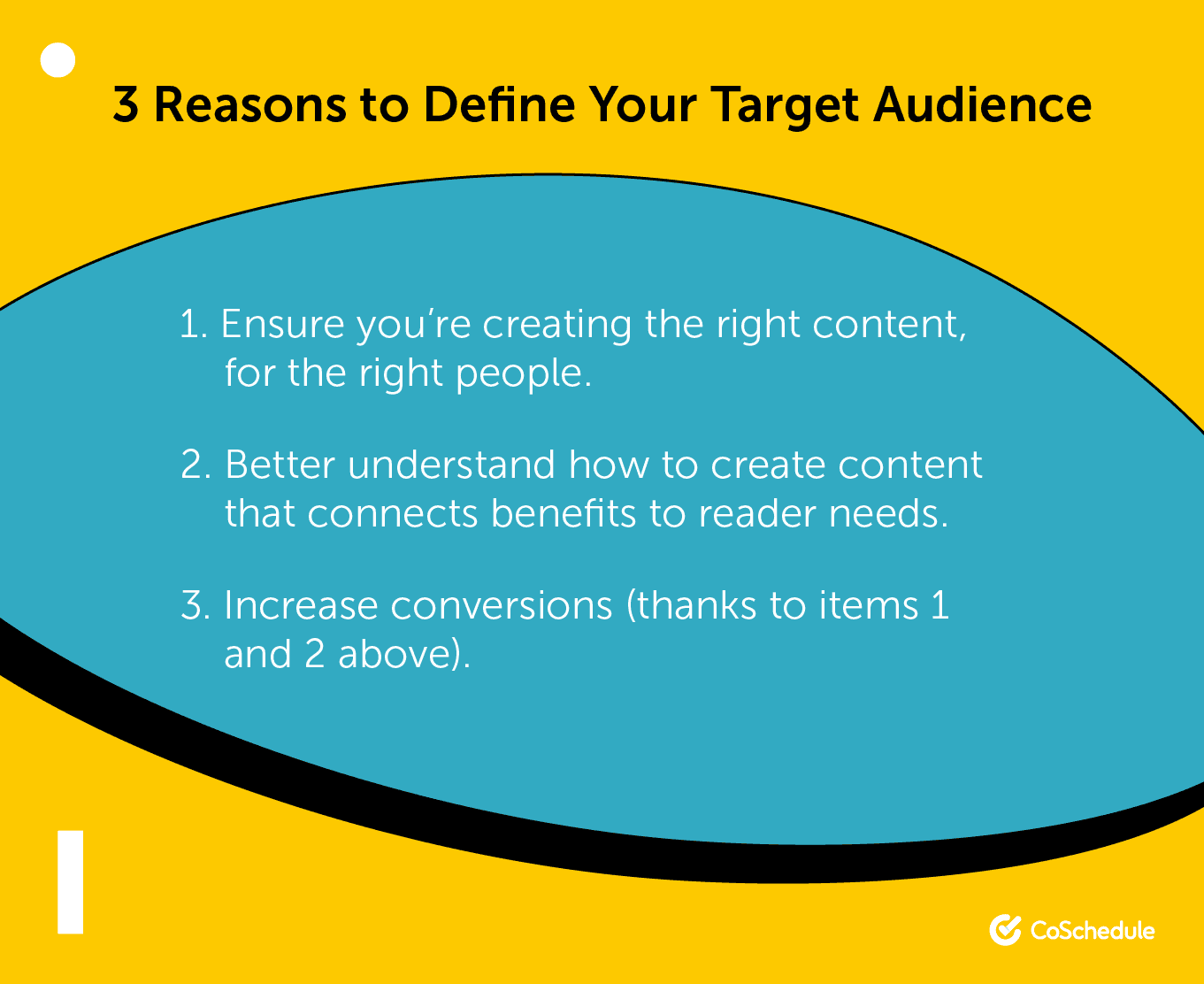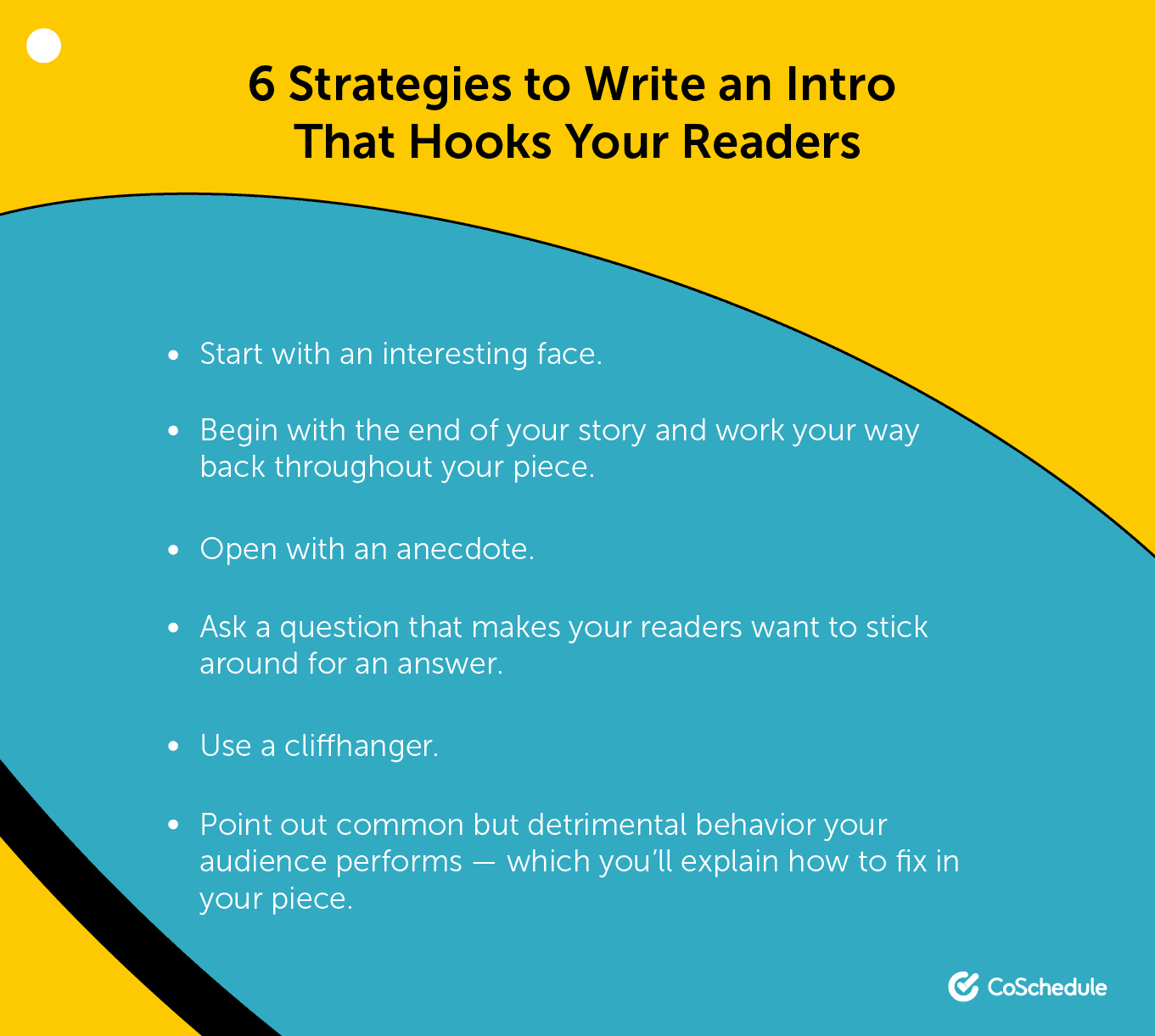Content marketing is more hyped-up than ever. Eighty-two percent of companies actively use it, according to HubSpot’s State of Marketing Report for 2021.
But, because of that popularity, the word “content” is often thrown around without context. If you’re new to marketing, you might find yourself asking: What is content, and how do I write it?
After all, you have to have content to market in the first place, and someone’s gotta write it.
This blog post will cover everything you need to know to dive into the world of content writing, including the types of marketing content, important skills to have and 40 tips for better content writing.
First, Claim Your Article Writing Template
Before you go on to learn how to write killer content, make sure you have this article writing template that will help you keep your words organized for every piece you write:
[content_upgrade_shortcode]
Table of Contents
- Content Writing vs. Copywriting: What’s the Difference?
- Who Writes Content?
- Examples of Content Marketing You Might Write
- What Skills Does a Content Writer Need?
- 40 Content Writing Tips for Your Next Project
Content Writing vs. Copywriting: What’s the Difference?
You might see the terms “content writing” and “copywriting” used interchangeably or in the same context. What are content writing and copywriting, and what makes them different?
At their cores, content marketing and copywriting have two separate purposes:
- Content marketing aims to educate and inform the reader. It helps customers get familiar with a brand or product before they buy something.
- Copywriting aims to sell a product or service. It encourages customers to take an action that brings them further down the sales funnel.
This distinction is a little reductive — as you’ll find out in this post, content marketing and copywriting can overlap. But, this framework can help you decide if you need content or copy to achieve a marketing goal.

Who Writes Content?
As Ann Handley says in her famous book, “Everybody Writes.” Everyone on a marketing team who touches content can benefit from brushing up on their content writing skills, including:
- Content marketers
- Social media managers
- Marketing assistants
- Product marketers
Chances are, if you’re reading this blog post, you write content, too.
Examples of Content Marketing You Might Write
Content comes in tons of formats, and the medium’s constantly changing. Here are some of the most typical types of content you’ll find in the wild.
Website Pages
Here’s a case where content writing and copywriting can overlap. Some content writers handle less sales-focused webpages, such as an About page.
Check out how Etsy’s About page informs customers about its work and mission:

How-to Posts
As their name implies, how-to blog posts teach readers how to do something. These posts contribute to a content marketing strategy by informing customers on a topic related to the brand’s product or audience.
Guides like this one on content management workflows are the CoSchedule Blog’s bread and butter:

Feature Articles
Journalistic content like feature articles is a popular trend in current content marketing. Just like they do in journalism, feature articles in content marketing use original research and interviews to feature a subject.
Zapier highlighted the no-code movement in tech by interviewing four creators in the niche:

Product Pages
This is another project that a content writer or copywriter might tackle. Product pages aren’t limited to ecommerce listings — they can also highlight a product’s capabilities or features.
For example, Databox has a page focused on their product’s ability to integrate data from multiple platforms:

Product Comparisons
If you have hot competitors on your market, you might consider writing a page or blog post comparing your product to theirs. This strategy can help you target your competitors’ customers in search and make a case for your brand.
HubSpot offers a comprehensive and honest comparison of its CRM platform with Salesforce:

FAQ Pages
A frequently asked questions (FAQ) page enables you to answer common questions about your product. It builds trust with your customers by making their experience with you more convenient.
Look how the FAQ page for Jeni’s asks questions about important subjects like franchising, gift cards and shipping:

Press Releases
A press release shares an announcement from your company that puts the most pivotal information first. Once you nail the format, this document will help you ask the press for coverage.
You’ll find many examples of press releases on PR Newswire, like this one from Research and Markets:

Case Studies
A case study highlights a company’s success working with a customer. It tells the story of how the organization worked with the client to solve their problem.
The social change communications agency Fenton shares their case studies in three parts — the challenge, their approach and their success. You can see that format in action in this Body Shop case study:

White Papers
A white paper uses extensive research to argue a point or solve a problem for your audience. This document works well as a lead magnet and helps you build topical authority.
Venngage has plenty of white paper templates to give you a better idea, including this marketing white paper template:

Social Media Posts
Content writers can sometimes find themselves writing social media posts to distribute their longer pieces of content. And, of course, social media marketers write this micro-content all the time.
In most industries, you can set up a social media content calendar and schedule that content to post on an optimized schedule. CoSchedule uses this approach to spread the word about their blog posts and podcast episodes on platforms like Twitter:

Email Newsletters
Email newsletters help you stay on your customers’ minds. They have all sorts of goals, including sharing brand updates, offering promotions, rounding up content and providing original information.
Today’s cleverly named Tomorrow newsletter shares social change updates from the company and across the web:

Video Scripts
Video might not come to mind right away when you think of content, but every video with a script needs a writer. And lots of companies use video in their marketing strategies. TechCrunch recommends using a template to write fast and consistent video scripts.
Sugar Me Smooth’s video scripts use visual puns to infuse fun into a sticky topic:
What Skills Does a Content Writer Need?
A content writer just needs to know how to write, right? Well, that writing involves more specific skills that make content shine. You’ll need to polish these abilities if you want to create high-quality content — not just words on a page.
Not to fear. We’ll explain what these skills are and share resources that will get you started building them.
Explaining Complex Subject Matter
Since content aims to inform and educate, your job as a content writer is to clearly explain the subject at hand. Sometimes, that information can get complicated, especially in business-to-business (B2B) and technical industries.
As CoSchedule’s own Ben Sailer points out, most audience members care about one thing — the benefits they’ll get. You’ll have the best shot at success if you look for ways to translate your subject matter into benefits for the customer. Learn more about his process in this guide from Crazy Egg.

Conducting Interviews With Subject Matter Experts
One of the best sources of original information on complex topics is a subject matter expert (SME). These people understand a concept inside-out and can provide unique insights into it.
Best of all, many of them would love for you to feature them in your content. Follow this step-by-step process to find an SME and interview them for your next project.
Performing Deep Topical Research
Good content uses high-quality sources that provide more than a surface-level view of your subject.
If you decide to use secondary internet sources for your content, make sure they deliver value. The University of Northern Michigan has an in-depth guide on evaluating sources that can apply to content writing research.
You can also collect your own information from your industry and customers. CoSchedule has blog posts on general marketing research and content marketing research. Many of the methods listed simply involve listening to your audience.
Conducting Audience Research
Your content should feature subjects and language tailored to your audience. After all, they’re the people you’re writing for. Don’t write a single word until you know who will read your content.

Look for information on your audience using surveys and analytics. Our guide to finding your target audience explains 13 tactics for determining who you’re marketing to.
Understanding SEO
A good content writer should know at least enough search engine optimization (SEO) to be dangerous. In other words, they ought to understand how SEO can elevate their content and how content impacts SEO.
We have an article on SEO visibility and an SEO checklist for blogs to help you jazz up your content. Looking for a technical deep-dive? Ahrefs has you covered.
Meeting Tight Deadlines
Content moves at a fast pace, meaning that content writers often have tight deadlines to follow. Depending on your role, you might also set up those deadlines. Wherever you fall in the marketing hierarchy, you’ll need to practice good time management practices to keep up.
Did you know that the internet has marketing-specific time management guides? Campaign Monitor’s guide helps digital marketers in general, while Curatti has one specifically for content marketing.
Writing Well for Multiple Formats
Each of the content formats we covered earlier has its own best practices. Good content writers understand how to make different types of content shine.
The standards for each type of content could take up a blog post on its own. So, start with a handful of content formats that work for your brand and research their best practices. Lots of folks start with blogs — this article can help you create a good format for one.
Interpreting Data and Using It to Tell a Story
Any time you perform original research, you’ll need to find patterns that relate to your marketing goals. Most importantly, you should use those patterns to tell a compelling story about your topic.
Think With Google explains that you can think of data storytelling like idea curation. Their article highlights the mindset and skills needed for the process.
Understanding Web Analytics to Measure Content Performance
Your job isn’t done after you hit the “Publish” button. Content writers need to analyze their past content’s performance to guide their future decisions. Keep using the elements that work, and avoid those that fall flat.
“Performance” is a subjective term that depends on your marketing goals. Semrush and the Content Marketing Institute will both teach you how to choose which metrics to track and how to monitor them.
40 Content Writing Tips for Your Next Project
Now that you know the basics of content writing, here are 40 tips to supercharge it:
1. Start With Good Keyword Research
You should build every piece of content on solid keyword research if you want it to perform well in search. Keyword research involves two steps:
- Using a keyword research tool like Google Adwords Keyword Planner or Moz’s Keyword Explorer to figure out what terms people search related to your topic.
- Choosing a mix of high-performing and low competition keywords to incorporate into your content. No need to go ham — choose a primary keyword and a few secondary keywords.

Check out these CoSchedule posts for more information on keyword research and strategy:
- Your Ultimate Content Marketer’s Guide to Keyword Research
- The Ultimate Keyword Strategy to Fill Your Editorial Calendar
2. Understand How to Use Secondary Keywords
Search engines use related terms to better understand topics more completely. Boom. You understand secondary keywords and have completed Tip #2.
Since Google tries to connect search terms to other words, you want to incorporate secondary keywords into your content writing.
3. Spend Time Writing a Detailed Outline or Brief
A strong outline will save you time and help you cut fluff. When you write a blog post or web article, start with an outline that includes:
- Your primary and secondary keywords.
- A brief description of your topic and the problem your content will solve. At CoSchedule, we call this section WIIFM, which stands for What’s In It For Me? Put yourself in your reader’s shoes, and ask yourself, “Why would I read this?”
- A brief description of your post’s target audience.
- Ideas for possible content upgrades (more on those later).
- A step-by-step breakdown of your content’s structure, including H2s and H3s.

If you’re the one writing the content, learn more from our post on how to write an outline. Building an outline for someone else to write? That’s a content brief.
4. Or, Let Voice Typing Write It For You
Does talking help you hash an idea out? Try writing an outline with Google Docs’ voice typing feature. Here’s how it works.
Open Google Docs and click Tools:
Then, click Voice Typing. You’ll see this icon appear:

Click that guy, and you’ll be able to speak into your computer’s microphone to type. Let those thoughts flow, then clean them up into a cohesive outline.
5. Get Into Your Competitor’s Heads
Competitive research will help you understand what content your competitors already have out there so you can go one step further. Use a tool like BuzzSumo to learn what topics they’re talking about. Then, review your main competitors’ content and ask yourself these questions:
- What kinds of industry lingo do they use?
- How would you describe their voice and tone? Are they serious? Funny? Authoritative?
- What kinds of content are they creating in the first place? Blog posts? Print collateral? Email newsletters?
Find out where they’re at and what they’re doing. Then, create content that adds to the discussion and appeals to your audience.
6. Set Deadlines
This tip sounds like a no-brainer, but setting deadlines is an art in itself. The right deadline-setting method for you will depend on the people you work with and your personal work style. Read our post How to Set Realistic Deadlines Your Team Can Actually Meet to learn how to set deadlines across a content team.
7. Write First, Edit Later
Every first draft sucks — including your favorite writer’s. Get the words out first, then go back and polish them. If you’re editing your work on your own, Grammarly and Hemingway will give you plenty of insights.
8. Give Your Headlines Some Feeling
Want your headlines to make an impact? Hit your readers right in the feels.
Emotional headlines — not clickbait headlines — can help you draw your audience’s attention. Try sprinkling some of these emotional power words into your headlines to give them extra oomph:

You can also let CoSchedule’s Headline Analyzer Studio evaluate your headline’s emotional impact.
9. Write At Least 25 Headlines For Every Piece of Content
Headline writing isn’t easy, and it’s partially a numbers game. We recommend writing at least 25 — sometimes you’ll burn through a couple dozen before you land on a keeper.
Use our Headline Analyzer Studio to tear through as many headline ideas as you can:

Narrow your options to anything that scores 70 or higher, and choose the finalist from there.
10. Write Intros That Hook Your Readers
Once a visitor lands on your page, you have to hook them fast. If your content format uses an introduction, make sure that intro counts.

11. Understand Tone and Voice
Your writing should sound like the organization you’re representing. So, if you’re marketing a law firm, you probably shouldn’t sound like you’re writing for Buzzfeed. You can make your writing sound consistent by establishing your brand’s tone and voice.
Dig deep into your tone and voice by following CoSchedule’s official marketing strategy guide.
12. Be Comprehensive
When you write long-form content, always aim to answer your reader’s questions as thoroughly as possible. That means explaining any questions that could come up or linking to resources that answer those questions.
Include all the information your reader needs to know about your topic, and you’ll be more likely to succeed. That’s all there is to it.
13. Avoid Passive Voice
Passive voice has its moments, but it usually ends up dragging your writing down. Stick to active voice whenever you can.

14. Write Better Title Tags and Meta Descriptions
Even if you’ve never heard of a title tag or meta description, you’ve likely seen them.
Title tags are the blue links that appear on search result pages. Meta descriptions are the snippets of text that appear beneath those links.

Think of this copy as your content’s elevator pitch to search engine users. You need to make it count by following these practices:
- Include your primary keyword in your title tag. This is one of the most important on-page SEO elements for you to pay attention to.
- Make your meta descriptions compelling. Why should people read your post? Does it include any freebies that might entice clicks?
- Stay within the recommended character counts. Anything extra will get cut off.
15. Write Blog Posts With Content Repurposing In Mind
As you write a blog post, think of ways that you can use its copy for other types of content. Here are some ideas:
- Use the introduction from your blog post in an email to promote it to your mailing list.
- Borrow stats and quotes for social media messages.
- If you have a YouTube video related to your post, adapt some of your blog copy for your YouTube description.
Snag more repurposing ideas from this post that goes in-depth on the subject.
16. Write “You” More Than “I”
As you’re writing your content, be mindful of how you can focus more on your reader than yourself. One easy way to do that is to focus on saying “you” and “your” more often than you say “I” or “we.”
For example, instead of using this phrase to describe tires:
Our new 27” tires are made from durable rubber that makes them the best on the market.
You can try this audience-focused sentence:
Once your bike is outfitted with our durable new 27” tires, you’ll experience a smoother ride.
See the subtle shift? The first example focuses on the seller and product, while the second focuses on the reader and the benefits they’ll get.
17. Write What You Know
Don’t write about a subject until you do the research needed to know it well. Become your own subject matter expert or interview one for their insights.
18. Keep Your Paragraphs Short
Three paragraphs, max.
19. Keep Your Sentences Short, Too
Under 25 words if possible.
20. Avoid Repetition
If you’ve said it once, you don’t need to say it again.
21. Use Links to Your Advantage
Do you find yourself covering a certain topic frequently in your content? Create a piece of content on that topic, then link to it in the future instead of repeating yourself.
This trick will save you time and beef up your search performance. Search engines use links between pages to understand their connections. So, linking between your posts helps you show search engines that you have unique, high-quality, and connected content.
For example, here at CoSchedule, we frequently mention editorial calendars in our content. Instead of going in-depth on what a marketing calendar is every time we mention the topic in a broader post, we’ll include a short description that links back to an existing post.
22. Avoid Jargon
Jargon — business-specific language — may make you feel smart when you use it, but it can end up alienating your readers. Use language that you know your average reader will understand. If you’re having a hard time figuring out how to rephrase jargon, plug it into Unsuck It for ideas.

Just be prepared for a little sass.
23. Avoid Keyword Stuffing
Keywords may help you rank in search engines, but cramming your content with them will make it hard to read. Plus, Google might actually de-index your content for low quality.
If it’s tough for you to avoid keyword spam, try writing your content without thinking about keywords. Then, insert your keywords a few times in places where they would fit naturally.
24. Think Users First, and Search Engines Second
Write for people first, and search engines second. That means making sure your keywords are included in your content, but don’t force-fit them in a way that sounds unnatural.
It also means avoiding targeting keywords that aren’t relevant to your audience. Just because a term has high search volume, doesn’t mean it’s a good fit for your audience.
25. Use Action and Power Words
You’re likely writing content because you want your readers to take action. So, your language will need to inspire them to do so.
Power words catch a reader’s attention and encourage them to do something. Try using some of these examples in your content:

26. Credit Your Sources
If you borrow a quote or piece of information from an outside source, link back to it. Aside from being the right thing to do, it also delivers benefits like:
- Increased exposure for your content. When you publish your content, let your sources know that you used their resources and thank them. Chances are they’ll share through their own channels.
- Support for your claims. Just like you learned in English class, cited sources make your arguments stronger.
- More useful content. When you link to sources, you give your readers access to even more resources, making your content more actionable.
27. Measure Your Success on Search and Social Media
You want your content to deliver real results. Social media sharing and optimizing can help you achieve that goal. Try these two techniques to improve your content performance through social channels:
- Measure your social success. Pay attention to which pieces of content get likes, shares and comments, and which don’t. Then, adjust your social and content strategies accordingly.
- Improve your social media copywriting skills. If your content underperforms on social media, try brushing up on your social media writing skills. A well-written post can make all the difference.
28. Use Yoast to Make Your Content Easy to Read
Consider adding Yoast to your WordPress stack. It rates your content’s readability in addition to evaluating its SEO potential.

Aim for a Fleisch Reading Ease test score of at least 60 if your tone of voice and subject allow for it.
29. Make Your How-To Content Actionable
When people have a problem or want to learn something, they go to Google. Your job is to be there with the information they need when those searches happen.
But for readers to get real use out of that information, they need to understand how to put it into action. You need to provide actionable content — content that your readers can do things with.
These tactics will help you make more actionable content:
- List all of the steps related to each task for your topic. A step-by-step explanation will help readers walk through the tasks they need to do.
- The more detail, the better. In most cases, people would rather have too much information than not enough.
- Use a lot of screenshots. Showing is easier than telling. Take a task and break it down step-by-step, with screenshots illustrating the process.
- Add a quick video. If explaining how to complete a step would take too many words, adding a short video explanation might be easier.
30. Add Value With Content Upgrades
Content upgrades are additional downloadable resources that add value to your post. When you’re writing, think about what kinds of content upgrades your readers would appreciate. These could include:
- Free Word or Excel templates (a CoSchedule favorite!)
- Infographics
- Ebooks, white papers or research reports
31. Beat Writer’s Block With an Effective Brainstorming Process
Every content person gets writer’s block, but an established brainstorming process can help you keep those ideas flowing.
Here’s the three-step process we use here at Coschedule:
- Spend ten minutes writing down as many ideas as you can think of.
- Spend ten minutes scoring each idea on a three-point scale. Three’s are awesome, two’s are average, and one’s are dud.
- Spend ten minutes picking the best ideas from your three’s as your finalists.
This process helps us generate a month’s worth of ideas in just half an hour. Here’s a more detailed breakdown of how it works.
Recommended Reading:
- How to Consistently Generate Great Article Ideas in 7 Steps
- 21 Content Ideas to Break Your Creative Rut
32. Store Writing Ideas in Evernote
Once you have a ton of ideas, you’ll need somewhere to keep track of them. We recommend placing all your top ideas directly on your editorial calendar.
For taking quick notes as you think of them, though, we recommend using Evernote. It’s the perfect tool for storing notes and ideas for content you could write. Best of all, it integrates directly with CoSchedule, so you can easily access your notes directly in your calendar.

33. Write With a Specific Angle
If your writing feels like it’s going all over the place, you might need to narrow your angle. In simplest terms, an angle is the perspective you’re writing from and the specific point you’re trying to make. This is something journalists know well.
You can borrow this trick from the journalism world by making sure your angle meets these three criteria:
- Unique perspective. What can you say about your topic, in a way no one else can?
- Focus. Know what to write, and what not to write. If it’s not directly related to your main point, cut it out.
- Relevancy. Does the combination of your topic and angle add up to something your audience wants to read?
34. Know How to Share Your Content on Social Media Effectively
Show off your content on social media effectively by following the best practices for the platforms you share on.
The two most important best practices to know about a social media platform are:
- The average best time to post: Check out our guide on the best times to post on different platforms. Use those times as a starting point, then refine your posting schedule according to your audience’s behavior.
- The ideal post length: Each social media platform has an ideal post length to follow. Buffer has a comprehensive guide on the subject.
35. Avoid Hyperbole
Authoritative content relies on facts and expertise, not inflated claims. If you feel like anything you’re saying sounds better than it really is, replace it with an evidence-based fact. Let’s compare a hyperbolic and evidence-supported statement:
- Hyperbolic: “Our bike tires are the absolute best available on the market.”
- Accurate: “Our bike tires offer 30% longer tread life than our top competitors.”
Assuming the company in this example had data to support the second claim, you can see why leaning on stats and facts is better than talking yourself up. One is likely to turn readers off, and the other offers proof that their tires really are the best option.
36. Include Stats and Data When Possible
Speaking of stats, people love seeing impressive statistics and real data. So, add them to your writing whenever you can.
Hard numbers offer benefits like:
- Conveying more specific benefits to your audience. “This product will improve productivity by 45%” sounds better than simply saying, “This product will boost your productivity by a lot.”
- Showing proof of your claims. Data and research give content authority.
- Grabbing your audience’s attention. For each of the reasons stated above, stats can help capture a reader’s interest while they’re browsing search results or skimming their social media feeds.
Grab your stats and data from sources such as:
- Your own surveys. There are tons of free survey tools out there for asking your customers or team members for feedback. For more details on running a marketing survey, we recommend this guide from HubSpot. A quick Twitter pool can work well, too.
- Industry research reports. You can often find these from professional organizations, publications, or research companies like Forrester Research. Some of them might be paid, while others are often free in exchange for your email address.
- Studies from other companies online. Brands often write posts about their own research findings. Leverage them to support your own content — just make sure to give them credit.
- Your own product tests. If you’re trying a new tactic or project, record your progress and track your performance. For example, if you’re marketing lawnmowers, you might try devising a new way to sharpen mower blades. You could then track how long it took to mow an acre of grass with dull blades versus sharp blades with your new process. You could then give it a headline like, “How to Mow Your Lawn 67% Faster With Sharper Mower Blades.”
37. Learn Basic HTML
Some basic HTML knowledge from a site like W3Schools will help you achieve tasks like:
- Manually correcting formatting issues in WordPress. Something doesn’t look right? Go into HTML mode and fix it yourself.
- Communicating better with web developers. Knowing the basics of how to describe problems can help you both arrive at a solution faster.
- Formatting content for SEO more effectively. This mainly entails using correct header tags (such as H2 and H3 tags), which are important for SEO and visual consistency.
38. Destroy. All. Cliches.
Cliches can irritate some readers and make your content less specific. Avoid them whenever possible.
Common cliches include:
- At the end of the day …
- When it’s all said and done …
- Back on track …
- Level the playing field …
- Par for the course …
- In this day and age …
- The best thing since sliced bread …
If you’re concerned about cliches in your writing, use Cliche Finder. It’s a free tool that lets you copy and paste your content and uncover cliches in one click:

39. Avoid Plagiarism
Never copy content from another site. Besides obvious moral issues, plagiarism also has technical drawbacks like:
- De-indexing: When a search engine detects two identical pages, it’ll take the plagiarizing page off the search results in a process called de-indexing.
- Legal/professional issues: You could put your organization in legal or professional trouble if you get caught plagiarizing from another company.
CopyScape will detect if you’ve inadvertently plagiarized a page or if another page has copied you. It’s a freemium tool that lets you enter a URL and quickly uncover copies.

40. Use an Editorial Calendar
We firmly believe all content writers should use an editorial calendar. We might be biased, but we wouldn’t be here if we didn’t think they were important for marketers.
Content editorial calendars fall into three types:
- Paper calendars. Print ’em out and keep them at your desk.
- Spreadsheets. These are much easier to use than paper and allow for more collaboration (if you use Google Sheets or the cloud-based version of Excel).
- Calendar apps. These are like digital power tools for keeping everything you’re working on organized. Might we recommend CoSchedule?
The benefits of using a calendar include:
- Taking control of your time. By getting more organized, you’ll be able to write with more focus.
- Knowing what you’ll write beforehand. When you have all your ideas mapped out in advance, you can stop stressing over what to write, and when.
- Meeting deadlines. When you’re able to visualize your upcoming workload, managing deadlines becomes much easier.
Every Day Is a Chance to Improve
As a digital marketing niche, content marketing is constantly evolving. It’s exciting, but it can be intimidating if you’re new to the game.
But, you know what those rapid changes mean? They mean that you’re changing, too. Every day in content marketing gives you a chance to learn something new.
The best way to get better at content writing is to do it. So, why not dig in?
The post Your Guide to Excellent Content Writing (Plus 40 Actionable Tips) appeared first on CoSchedule Blog.




